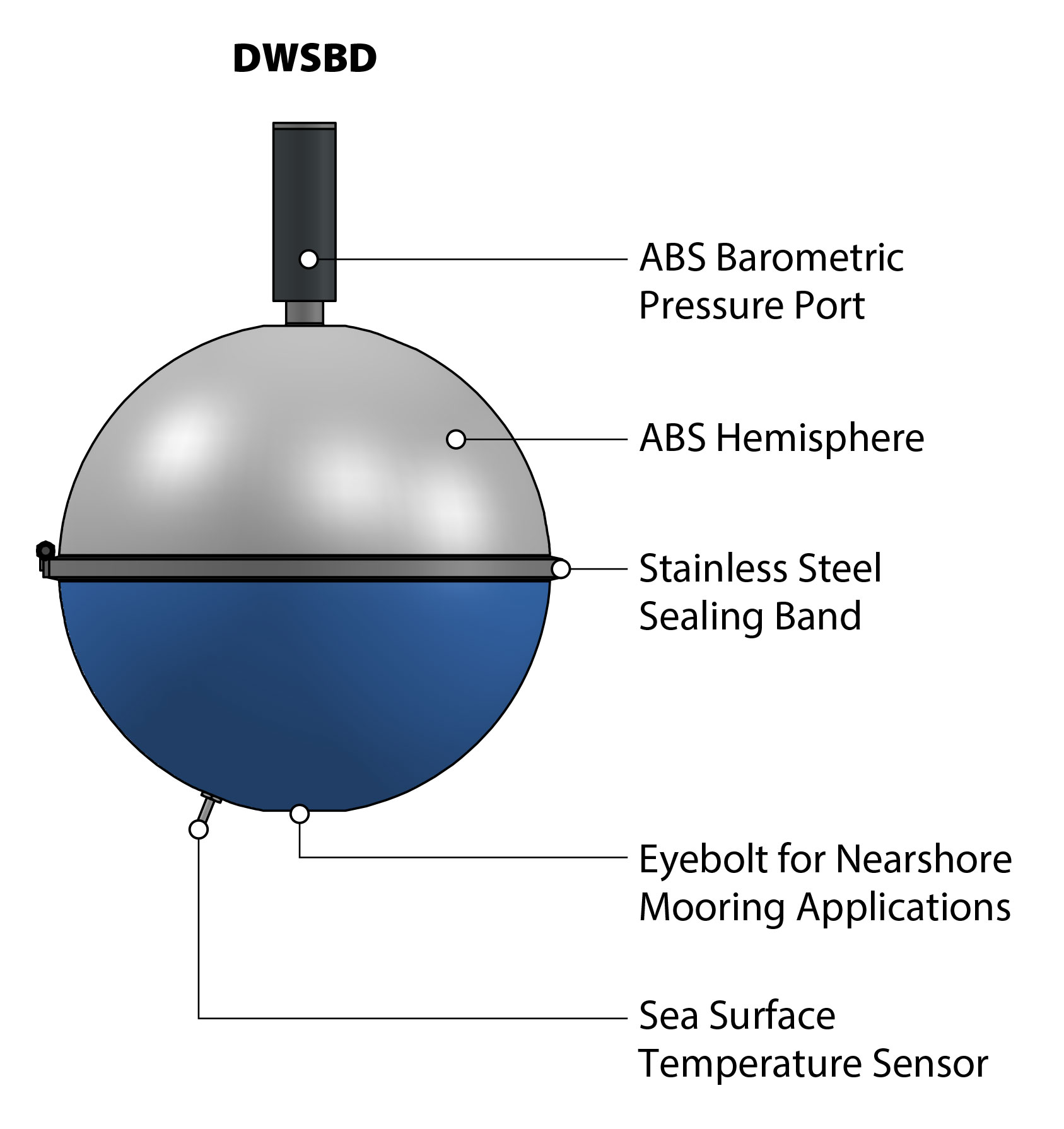
Directional Wave Spectra Barometer Drifter (DWSBD)™
Technical Description
- 35 cm sphere surface float
- GPS-based tracking and wave engine
- Iridium Short Burst Data (SBD) telemetry
- Onboard datalogger with up to 16 GB of storage
- Fourier coefficients a0, a1, b1, a2, b2
- 1/256 Hz bandwidth from 0.03–0.50 Hz
- Sea level barometric pressure sensor (±0.4 hPa accuracy)
- User-programmable sampling window
- Sea surface temperature (±0.05°C accuracy)
- Freely drifting or restrained mooring configurations
- One-year lifespan
> Download technical illustration (312 KB pdf)
> Download data sheet (657 KB pdf)
Barometric Pressure Sensor
The Directional Wave Spectra Barometer Drifter (DWSBD) has the same capabilities of the Directional Wave Spectra Drifter (DWSD), but it also carries a barometer to measure sea level pressure (Niiler, 2001; Maximenko et al., 2013; Centurioni et al., 2017; Horányi et al., 2017). The air pressure sensor can either be a high precision barometer (HPB) by Honeywell, stable over the two-year-long nominal lifespan of the drifters and with an accuracy of ±0.4 hPa, or an integrated pressure transducer (IPT), also by Honeywell that has similar specifications and accuracy.
Wave Engine
The heart of the DWSD sensor is a high-performance GPS engine paired with in-house developed software algorithms for onboard computation of the directional wave spectrum.
The DWSD sensor is designed as a turn-key solution for all wave monitoring requirements.
Data Quality
Onboard processing enables computation of First-5 Directional Fourier coefficients a0, a1, b1, a2, b2. First-5 coefficients can be used to compute wave parameters such as significant wave height, swell direction, and directional spread, among others.
Intercomparison studies have been conducted in San Diego, California (mooring vs. Datawell DWR3), the Gulf of Naples in Naples, Italy (mooring vs. RDI ADCP), and the equatorial Pacific (spheres vs. Wave Watch III) and are ongoing.
References
Centurioni, L., A. Horányi, C. Cardinali, E. Charpentier, and R. Lumpkin. 2017. A global ocean observing system for measuring sea level atmospheric pressure: Effects and impacts on numerical weather prediction. Bulletin of the American Meteorological Society 98(2):231–238, https://doi.org/10.1175/BAMS-D-15-00080.1.
Horányi, A., C. Cardinali, and L. Centurioni. 2017. The global numerical weather prediction impact of mean-sea-level pressure observations from drifting buoys. Quarterly Journal of the Royal Meteorological Society 143(703):974–985, https://doi.org/10.1002/qj.2981.
Maximenko, N., R. Lumpkin, and L. Centurioni. 2013. Ocean surface circulation. Pp. 283-304 in Ocean Circulation & Climate: A 21st Century Perspective. G. Siedler, S.M. Griffies, J. Gould, and J.A. Church, eds, International Geophysics, vol. 103, Academic Press.
Niiler, P.P. 2001. The world ocean surface circulation. Pp. 193–204 in Ocean Circulation and Climate: Obersving and Modelling the Global Ocean. G. Siedler, J. Church, and J. Gould, eds, International Geophysics, vol. 77, https://doi.org/10.1016/S0074-6142(01)80119-4.

